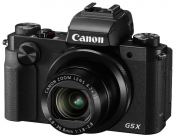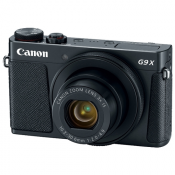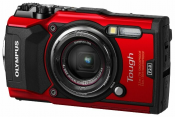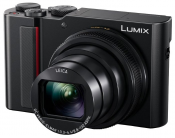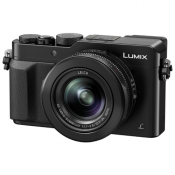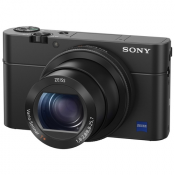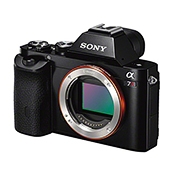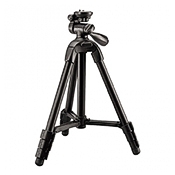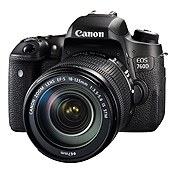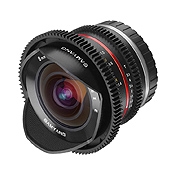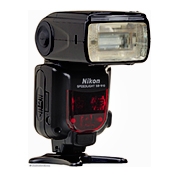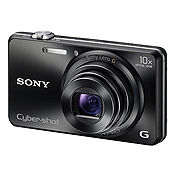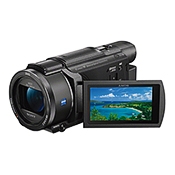Panasonic Lumix DMC-FZ1000
Short review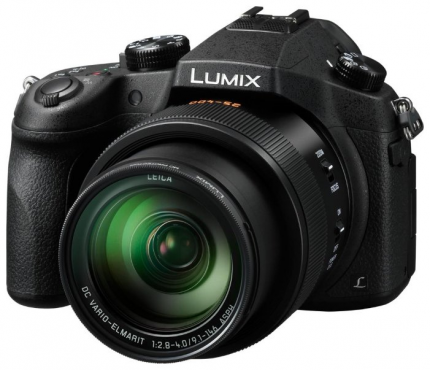
Buy Panasonic Lumix DMC-FZ1000
Panasonic Lumix DMC-FZ1000 Specifications
Yandex.Market data
| Camera | |
| Camera type | compact |
| Lens | |
| Focal length (35mm equivalent) | 25 - 400 mm |
| Optical Zoom | 16x |
| Diaphragm | F2.8 - F4 |
| Lens name | LEICA DC VARIO-ELMARIT |
| Matrix | |
| Total Pixels | 21 million |
| Effective Pixels | 20 million |
| The size | 1 "(13.2 x 8.8 mm) |
| Crop factor | 2.7 |
| Maximum resolution | 5472 x 3648 |
| Matrix type | CMOS |
| Sensitivity | 80 - 3200 ISO, Auto ISO |
| Extended ISO values | ISO100, ISO6400, ISO12800, ISO25600 |
| Functionality | |
| White balance | automatic, manual installation, from the list |
| Flash | built-in, red-eye reduction, shoe |
| Image Stabilizer (Still Image) | optic |
| Shooting modes | |
| Macro photography | there is |
| Shooting speed | 12 fps |
| Timer | there is |
| Time-lapse mode | there is |
| Viewfinder and LCD | |
| Viewfinder | electronic |
| Using the screen as a viewfinder | there is |
| Viewfinder field of view | 100% |
| Viewfinder Pixel | 2359000 |
| LCD screen | 921,000 dots, 3 inches |
| LCD type | turning |
| Exposition | |
| Excerpt | 60 - 1/16000 s |
| Manual setting of shutter speed and aperture | there is |
| Automatic exposure processing | shutter priority, aperture priority |
| Exposure compensation | +/- 5 EV in 1/3-stop increments |
| Exposure metering | multizone, center-weighted, point |
| Exposure Bracketing | there is |
| Focusing | |
| AF illuminator | there is |
| Manual focus | there is |
| Face Focus | there is |
| Minimum shooting distance | 0.03 m |
| Memory and interfaces | |
| Memory card type | SD, SDHC, SDXC |
| Image formats | JPEG (2 levels compressed), RAW |
| Interfaces | USB 2.0, HDMI, mic-in, Wi-Fi, remote control jack |
| Food | |
| Battery format | your own |
| Number of batteries | 1 |
| Battery capacity | 360 photos |
| Video and sound recording | |
| Video recording | there is |
| Video recording format | AVCHD, MP4 |
| Video codecs | AVC / H.264, MPEG4 |
| Maximum video resolution | 3840x2160 |
| Maximum video frame rate | 120 fps |
| Maximum frame rate when shooting HD video | 25/30 fps @ 1280x720, 50/60 fps @ 1920x1080 |
| Sound recording | there is |
| Recording audio comments | there is |
| Other functions and features | |
| Body material | metal / plastic |
| Digital Zoom | 4x |
| Additional features | tripod mount, remote control, orientation sensor |
| Additional Information | built-in stereo microphone |
| Dimensions and weight | |
| The size | 137x99x131 mm |
| Weight | 831 g, with batteries |
Opinions from the Panasonic Lumix DMC-FZ1000
Yandex.Market data
Advantages:
4K. Aspect ratio in 4K mode. 100 frames per second in FullHD. 5-axis stabilizer. fast matrix.
Disadvantages:
no
Comment:
I took it exclusively as a 4K camcorder. there is a Canon 5D mark II for photos. Before buying, I read a lot of reviews and comments, but in the end I took it. And as it turned out, all the reviews and comments were unreliable. About the compartment, which is supposedly closed by the mounting pad. The solution is quite simple to buy a tripod head, which has a screw adjustment, for example, like the Benro HD-28. That's it, now you can not only easily change the memory card, but also the battery. The stabilizer at the long end, and indeed the stabilizer, should be turned off when shooting with a tripod. Any adequate person on EGF 400 will not take off his hands, no stabilizer will help here. again the problem is solved. The video has a pretty good DD if you use your hands, and not put everything in auto mode. Even in FullHD mode, the files in the video editor are stretched quite well (set the color space 0-255 in the camera settings).I was very pleased that in 4K mode, the crop of the matrix is used and the EGF becomes 37-592 (in FullHD 24-400), as well as the fact that you can change the aspect ratio of the frame, set a 4K photo and select (16: 9, 4: 3, 3: 2, 1: 1). The 1: 1 mode is very interesting, because the video is shot with a resolution of 2880x2880, which, when using the 2x anamorphic attachment, allows you to shoot a video 5760x2880 with this camera, the number of pixels is 2 times more than 4K. I also bought Polaroid 0.43x and 2x converters for the camera, which expands the capabilities of the already good Leica lens that is installed in the camera. I was also pleased with the thread for 62 mm filters, through the adapter ring I use the filters that I took for Mark 77 mm. Yes, I remembered, in all the reviews they scolded that the screen is not touch-sensitive. We go to GooglePlay or AppStore, download a free application from Panasonic and use our phone or tablet as a remote touch screen.
April 12, 2015, Yekaterinburg
Advantages:
I am delighted with this camera! After the FZ200 and G2 from Panasonic it didn't take long to get used to, we have to compare with the previous ones. 1. The rate of fire is not only declared, but actual too. Unlike my older cameras, the clipboard is huge and there are no delays in saving photos during burst shooting, but a high-speed memory card is required. 2. Huge viewfinder, I only prefer to use it instead of the display. By the way, the display is not touch-sensitive, but using Wi-Fi you can control the camera like a touch screen, but on a phone! 3. 1 "matrix, with the help of which even ISO 1600 is quite acceptable. 4. The lens with its zoom and stabilizer is just super! Optical 16x is quite enough for birds and airplanes. 5. There is 4K video, although not quite like this feature. I shoot on FullHD to save space on the card 6. I liked the "help" with manual focusing - the area of sharpness is highlighted both when shooting and when framing. When you "play" with a ring, you can see how the sharpness walks around the frame - very convenient. 7. Wi -Fi is a great thing, especially with the Panasonic Image App on a smartphone. Viewing photos and removing defects is much more convenient on a 5.5 "screen than on a camera. Moreover, then you can upload or forward the photo to your page, or anywhere. The smartphone can also be used as a remote control when shooting or to change camera settings. 8. Turning on the camera is almost instantaneous in any mode (photo and video) and you can IMMEDIATELY take pictures. (before that, my cameras had a decent pause, the larger the card size, the longer the pause) 9. The battery does not give the declared values. It works much longer! Maybe I just use it sparingly ... 10. A wonderful function - level. Allows you to align the horizon in the camera, not in the editor. 11. After 6 months, I found a wonderful property of 4K video - you can view and save the frame you like not only on the camera, but there are editors that allow it. It turns out 8 megapixel picture!
Disadvantages:
Of the shortcomings ... where without them. one . For some reason, this is transferred from camera to camera: battery compartment cover and memory card near the tripod mount. It is impossible to swap both if the camera is on a tripod. But I rarely shoot with a tripod and it's not very annoying. In addition, it looks flimsy when it opens, it seems that it will fall off and fly away, but can it only seem? 2. Some necessary settings are buried in the menu, you won't be able to change it quickly (maybe you can assign a function button, but haven't delved into it yet) 3. With a hood on the lens, it gives a shadow at the bottom of the frame when using a flash. I have to shoot it (this is nit-picking - I hardly use a flash). By the way, it looks flimsy ... 4. For some reason, you can't completely turn off the preview after shooting, only at high speed (12 fps and higher) there is no shooting. I prefer to view the photo later.
Comment:
Great camera! The lens is the most suitable for the traveler, quite fast and with a good zoom. Better photo and video quality than my predecessors.
December 7, 2017, St. Petersburg
Advantages:
I have been using it since August 16. The device is not for filming blindly with default settings (this is about in-camera JPG). Many settings are valid for photos and videos in modes P, A, S, M (video start video button). With the settings, you can get a professional level photo. A wide range of DD adjustments and detailing - clarity (sharp is not felt). The machine is very good. BB. It is synchronized with the built-in and any external (studio with radio synchronizer including) flashes in the entire range of shutter speeds up to 1/4000 (I meet for the first time !!!). Excellent drawing and LEAK color. Good weight JPG and RAW files. After NIKON D700 and FUJIFILM, X-T1 fell into the hand like a native, I got used to it right away. The device is not for filming at twilight with poor lighting !!! ISO actually working 1600 (noise reduction is always at a minimum of -5). I studied all the chips practically. Many more combinations of settings, every time I open something new. The video is excellent at a semi-professional level. In short - a device for creativity!
Disadvantages:
Cons - poor noise reduction algorithm (eats details and lathers the picture). Does not turn off, can only be set in styles -5. Brake zoom, after a long workout I zoom smoothly. Brake start and stop video, no pause. It is difficult to get the background blur (I don't think it's a disadvantage - a small matrix). But the big depth of field. The bokeh is round, acceptable. Shooting video is only unhurried.
Comment:
An excellent model not only for creativity, but also for making money. I did not print the photo, but I think it will be excellent up to A3 (from experience on the D700) There are a lot of photo examples here https://www.flickr.com/groups/lumix-fz1000/pool/with/35315730666/. My experiences and photos in the club https://club.foto.ru/forum/view_topic.php?topic_id=710751&page=44#listStart
June 17, 2017, St. Petersburg
Advantages:
1. The quality of the photo - Here the taste and color as they say. Definitely many times better than fotiki with matrices 1 / 2.3 ". Here the color depth is noticeably wider and there is less noise and the range of contrast is greater. But in comparison with matrices, APS-C certainly loses both in noise and in color rendition. But you can 2. Video quality. - everything is very good for FHD. You want 24,25.50 or 60 frames per second. The detail is excellent! You can also use 120 frames per second for FHD! (for slow motion). manually set shutter speed and aperture for video recording! - quickly focuses. 49 variable focus areas. - during manual focusing, sharp points of the subject are highlighted by flickering "pixels." Therefore, it is quite easy to achieve accurate focus with manual adjustment. (in contrast to DSLRs). - switching focus options. already. Those. direct access. Conveniently. 3. Exposition. Namely, the built-in convenient exposure meter. Thanks to which, in fully manual mode (M), without any problems, you can set the shutter speed and aperture to your taste. There are two shutters to choose from - mechanical and electronic. Convenient for high-speed shooting - 50 photos per second! 4. Viewfinder. - it's just a song! I gave it to a dude who has a Nikon DSLR to see it, so he didn't immediately believe that an electronic viewfinder could be so "pixelless". You look at him as if through optics. Pixels are visible if you search for them for a long time! Compared to a DSLR, the viewfinder picture is clearly brighter and clearer. 5. Control from a phone with an android. - you can take pictures by controlling your phone via wifi. You can see what you are shooting on the phone screen. Many camera settings are available from your phone. Even the zoom. In general, conduct covert shooting from behind cover or use the phone instead of the remote control. Conveniently.
Disadvantages:
1. Photo quality - the matrix is noisy even on ISO-125. There is ISO-80, but it is software, not physical. Smoothing noise in the photo, when shooting, only adjustable. (not switchable) Shumodav converts uniform "analog" noises into horrible "synthetic" granules. As a result, in the "zhipeg" even on the minimal iso, in the shadows, it is ugly "granulite". The Rav helps out pretty well. But if you are not a fan of looking at pictures under a magnifying glass, then there is no noise. )) - photographs in RAW. The average file size is 23MB. For 20MP, this is somehow not enough. Although the pictures are in equal without noise. 2. Focusing - the focus ring on the lens has no mechanical connection with the focusing mechanism. The rotation speed of the ring has a non-linear effect on the focusing speed. Inconvenient to troch. 3. Settings menu - there may be a problem with the firmware. There are two separate categories of settings in the menu - for photos and for videos. But! Many functions, when changed in the video, for example, change the same settings in the photo. Inconvenient and not logical. Why then duplicate the same settings in the menu. 4. Macro mode. - He is, of course, on the passport. But! Macro only works at wide angle. Although the subject is close to the lens, it has a small size in the photo. Using the zoom will inevitably increase the minimum focusing distance. As a result, the size of the object in the frame only decreases. There is a macro zoom mode. But this zoom turned out to be ordinary digital interpolation. 5. White balance. - avotmat is clearly blue-violet in the shadows. Manual presets are of little help. Achieve correct color rendering only in Photoshop. There is a good manual mode. 6. The stabilizer is five-axis. When you turn it on, the picture freezes like a freeze frame. But! It works great when you want to frame. But when shooting video, when you are moving, the stabilizer helps you very sluggishly.
Comment:
Overall, the camera is good. Especially if you decide to get away from the soap dish for something more serious. Although for this price you can buy a DSLR with a lens. True, the lens will be nasty.
13 Aug 2015
Advantages:
Excellent stabilization system for photos. At a short focus, clear frames are often obtained at 1/2. Excellent auto white balance. After Canon's ultrazoom, excessively warming up the frame on the machine, and constantly requiring you to set the WB manually or select from presets - it's just fine. Convenient management. For ultrazoom, a low-noise matrix is enough. up to ISO 800 is good, at ISO 1600 you can still sometimes play around with the noise reduction and sharpness settings in RAW processing and get good results. Good noise reduction algorithm - even when the noise comes out, it has a more pleasant, "brightness" rather than "color" character. Good lens.
Disadvantages:
1. A little strange behavior of autofocus at a long focus, sometimes (in 5-10 percent of cases) it can get past even in good lighting conditions. It is necessary to constantly monitor whether you hit it or not. In this sense, even my oldest ultrazoom Canon S3 IS was slightly better. 2. For the device, which is positioned as a universal means for shooting video / photo, disappointing behavior of the stabilizer when shooting video. Even with a deliberately smooth rotation of the camera, the video "breaks". It also records the sound of the zoom. The same thing - even S3 did it better.
Comment:
In general, the camera is very happy after switching from ultrazoom with a 1 / 2.5 "matrix. I hope that the problem with autofocus is soft, and can be corrected. Regarding stabilization when shooting video, I would like to add: It seems that the stabilizer is trying to" keep "the frame until the last, believing that my hands are shaking so much, and then gives up, but starts over again. Exactly the same behavior was observed in the old Panasovskaya camcorder with electronic stabilization due to the redundant matrix. Perhaps the same electronic stabilization technology is used here along with optical.How to disable this "prestabilization" - I have not found. The bottom line is that the very beautiful stabilizer that I was so happy about when photographing is absolutely useless when shooting video.
February 13, 2015, Novosibirsk
Advantages:
Light glass, quick focus, balanced ergonomic body, excellent informative viewfinder, logical and flexible menu settings, possibility of in-camera RAW processing, advanced video part.
Disadvantages:
A little slowed down wi-fi. Tactilely not very pleasant focusing ring. The slippery plastic of the protective lens cap and its flimsy fixation on the lens are expensive.
Comment:
I took the "old man" Fujifilm X-S1 to replace it. I was tormented in choosing between Sony RX10 and this Panas. Replacement justified - great travel camera.
March 4, 2015, Moscow
Advantages:
An excellent harvester for photos and videos. More even for videos. White balance for video is even better than for photo. In the photo, like all Panasonic, it turns a little red. There is a microphone input, you can put a gun and minimize the noise from the zoom. There is 4K video, but not without drawbacks :) The built-in stereo microphone is of quite decent quality.
Disadvantages:
4K video shoots normally, if only with a tripod. The stabilization mode in 4K is there, but the impression is that it is not. The picture is torn, i.e. the area of application is purely staged shots, meeeeeeed wiring ... What was the problem with making a screen with a touch screen, it's not clear, I feel the mark of the marketing department. The built-in flash sticks flimsy to its mount when open. Those. if you touch it while shooting, then I think you can easily demolish it. No switch for manual zoom, only electric drive. It's sooo easy to do, the marketers have worked again :) What if the motor stuck? Motor noise while zooming is audible on the built-in microphone. An external one is required - an interview lapel or a gun on a rubberized mount. Video recording is limited to 30 minutes. Hopefully custom firmware will fix this. JPEG noise reduction from the camera gives a not very sharp picture, it is better to shoot in RAW. At the same time, when viewing the captured photo material, the device shows the images as if in the "quick view" mode, i.e. not at maximum resolution. Enlarging the picture on the screen does nothing, just soap! From the beginning I thought that he was shooting like that, it turned out not, when viewed on a PC monitor, everything is quite sharp. There may be a problem with the mini-preview of the photo embedded in the RAW file. For example, Canon and Nikon add a full-fledged JPEG with excellent quality to the RAW file, so there are no problems with viewing there. Plus, there are no profiles for this camera in programs like Lightroom, ACDSee Pro, etc. They don't see the camera settings if you're shooting in RAW. And you have to finish everything manually. I hope this is temporary, but so far unpleasant.
Comment:
In general, despite some slaughtered options, the device was a success. The video quality is pleasing to the eye. The photo quality is excellent. When shooting in RAW, then in Lightroom, noise is stifled beautifully up to 1600 and even 3200 ISO. To shoot video for the best quality at 1080p, you need to shoot at 60 frames. Only in this case you will get the sharpest picture possible. Like all Panasonic (including AG AC professional video cameras), at 24/30 frames a little soapy, so you need to keep that in mind. Better distill then in the editing program to 24p. Stab has nothing to do with it. It is better to take good memory cards for it, preferably 45MB / s. 30MB / s is already going a bit hard. Oh, yes - everyone criticizes the location of the tripod socket near the battery - what do you want, it's an amateur camera. Likewise, the memory card slot is hidden in the battery compartment. You need to use a photo tripod or video with a small head for DSLR. The main thing is that there is a lid on the side through which you can lead the power cord from the adapter battery to an external accumulator of huge capacity, for example, for cyclists that they sell at 8.4 volts :). Well, or a power adapter. So we are waiting for the firmware that removes the restriction on video shooting and you can put it on a tripod for a couple of hours and shoot, shoot ... I'll just say - the device is ideal for videographers, as a second camera in a set for a fancy DSLR, and in general as the only one if a flash with a swivel head buy in addition.Compact, lightweight, pleasant to use. As an addition: unfortunately, the hacked firmware for unlimited shooting time did not work out. Apparently the era of the so-called firmware hacks goes into oblivion, tk. manufacturers have a huge number of models, it is impossible to deal with all physically. So now if there is no function, it is better to overpay and take it where it is implemented as needed. Manufacturers are happy - they sell the same thing in different packaging at different prices, now no one bothers them :) The same Magic Latern for Canon is not the same for a long time, they are digging on the spot ... Pichal.
13 october 2017
Advantages:
# 1. Thoughtful menu. # 2. All essential functions on programmable buttons. No. 3. The video is of high quality. No. 4. 16x zoom. No. 5. I used Sony cameras before, and at first I was confused by the flip-up screen of Panasonic, BUT! as soon as I started to use it and got the opportunity to take pictures at different inclinations, angles on outstretched arms, my opinion changed dramatically! No. 6. For the first time I came across such a detailed, interactive, instruction manual, without which I can't imagine how much time it would take to study ..
Disadvantages:
# 1. In order to simply turn on the viewing of pictures, or connect to wi-fi, the lens extends, then it moves in. (you could have done by default to click on the view button and enable). # 2. Not a convenient cap that covers the lens, (you need to constantly orient it) №3. Connection via wi-fi "Image app" is not thought out. too many movements need to be made and confirmed simultaneously on the phone and the camera ... №4. The lack of a touch screen, which is why the focusing functionality is a little overly sophisticated.
Comment:
Purchased as a Photo-Video device (all in one). Justified 100%. Masterpiece! Low bow to you Panasonic.
February 7, 2016
Advantages:
For this price, the only decent one with a very good lens for 4k video. Pros: many modes, wide dynamic range, including video, bright lens, low noise sensor, beautiful round bokeh.
Disadvantages:
There are enough flaws, including the stupidest ones. Firstly, this is the crop factor when shooting 4k video. Secondly, the size of the matrix for the photo, in order to get a portrait blur of the background, you need to make a 100 mm zoom. But when the zoom is increased, the aperture also closes and the bokeh becomes not beautiful. We have to move away from the subject of shooting. The sensor is small and often the images are "flat". The focus ring is driven, not mechanical. You can't shoot video on manual focus. Further, the software cons. When switching from video to photo, the "manual" mode is reset to standard. If you change the mode in the photo and switch to video, then the mode is reset to standard. With the update (which was only 1 in a year), the firmware did not fix anything. There is no auto iso setting in video mode. If the light changes quickly, you won't be able to shoot continuously. We'll have to shoot in fragments, changing the iso manually. The stupidest disadvantage is that there are so many settings that they contradict each other. There is a "cinema dynamic range" mode and there is a "dd extension" setting with varying degrees. With autofocus, it's a bomb! There are already 4 types of them. And what letters mean what you have to guess for yourself. Some settings prohibit autofocus. All this is superimposed on each other and in none of the instructions there is an explanation of what to use with what and for what. And of course the battery and the card! They are not available when the camera is mounted on a tripod, gimbal. That is, if the memory runs out, you need to disassemble the stabilized platform. Efficiency is zero.
Comment:
I have been using it for about a year. The principle is satisfied, because there are no alternatives at this price for the quality of the picture. Manufacturer, fix the jambs in the firmware and make a normal instruction!
April 8, 2016, St. Petersburg
Advantages:
The Japanese turned out a wonderful camera, universal. Pictures and videos are excellent, the sharpness is 5 steps, portraits, landscapes, the color is all good, besides, it also turned out to be low noise.
Disadvantages:
Ruble's exchange rate!
Comment:
October 18, 2014, Moscow
